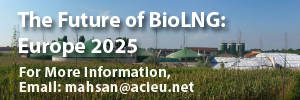NZ exploring carbon sequestration using biomass
Higher carbon emissions is one of the more difficult to avoid consequences of massive economic growth. This calls for technology that can both generate electricity and remove CO2 from the atmosphere. Fortunately, geothermal wells may have already provided the foundation for such technology.
UC Engineering PhD student Karan Titus is working on research that can combine geothermal with bioenergy to create a carbon sink. This is a process called Geothermal-Bioenergy and Carbon Capture and Sequestration (BECCS). In this process, forestry waste is burned to generate electricity and the CO2 emissions are captured and injected underground using geothermal wells.
With this technology, the combination of geothermal energy with bioenergy will generate more electricity than geothermal alone. The process is considered emissions-negative since forests already remove CO2 from the atmosphere as they grow.
“Although this work is at an early stage, we think it’s a hugely promising step forward, particularly as the world’s economies continue major plans for decarbonisation,” said Titus.
“Basically, we have a way to suck huge amounts of CO2 out of the atmosphere and put it underground in geothermal fields. It has the potential to be both good for the climate and good for the economy,” said UC civil and natural resources engineering senior lecturer Dr David Dempsey.
“Providing a reliable pathway for electricity generation that has net-negative emissions is very powerful and sets a great example for the rest of the world,” added UC Civil systems engineering lecturer Dr Rebecca Peer.
Since most of the geothermal systems in New Zealand are close to major forestry operations, the biomass does not need to be transported over long distances for this integration. The academics further pointed out that CO2 prices are at an all-time high of $80/tonne, highlighting the huge potential of this cross-industry research.
Preliminary modelling done by the research team showed that a geothermal BECCS system can generate negative emissions between -200 to -700 grams of CO2 per kilowatt hour of electricity. This is dramatic improvement compared to the estimated 400 grams of CO2 generated per kilowatt hour of electricity produced by a natural gas power plant.
When applied to the 160-MW Wairakei geothermal power plant in the Taupo Volcanic Zone, New Zealand, a single geothermal BECCS system can capture about 1 million tonnes of CO2 per year. This is equivalent to taking 200,000 cars off the road.
The Intergovernmental Panel on Climate Change (IPCC) has considered BECCS an important part of mitigating climate change and limiting global warming to 1.5 degrees Celsius. The time to decarbonise is “now or never.”
Geothermal BECCS is promising because geothermal systems already have the infrastructure to execute such projects. Facilities only need to be modified to integrate power production from biomass. This is also the perfect time for New Zealand to invest in BECCS considering the huge reduction in emissions budgets and the realignment of the country’s budget toward the Climate Emergency Fund.
New Zealand is not alone in their effort to leverage geothermal technology for carbon capture. In Iceland, CarbFix and ON Power are working on the Silfurberg Project that aims to capture carbon dioxide and hydrogen sulphide emissions and pump these into the nearby basalt layers. This project has received funding of about EUR 3.9 million from the European Union’s Innovation fund.
The geological storage of CO2 has also been explored by researchers from France as well as geothermal developers in Indonesia.




















